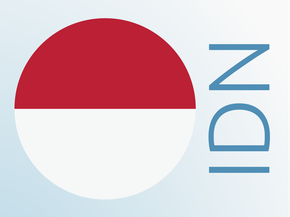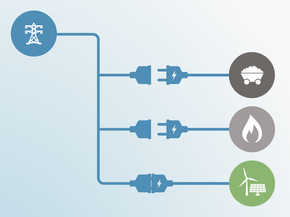Country summary
Overview
Indonesia updated its NDC in December 2020 but did not increase its climate ambition. The long-term strategy, submitted with the NDC, presents a pathway that if implemented would be compatible with achieving net zero emissions by 2060.
The new ten-year electricity supply plan shows significant renewable capacity addition in the coming decade; however it is by far insufficient. Coal capacity continues to increase until 2027 and is planned to represent 64% of electricity generation by 2030, whereas it would need to be a maximum of 10% by 2030. These plans are completely diverging from the Paris Agreement’s goals. Coal is Indonesia’s biggest export product, and with major export markets beginning to implement the Paris agreement with consequential reductions in demand, there is a clear need for Indonesia to diversify its economy and reduce the risks of relying on fossils fuel exports.
While some improvements to the regulatory environment for renewables have been seen, significant barriers remain and would need to be addressed to realise Indonesia’s vast potential for renewable energy. We rate Indonesia’s climate targets and action as “Highly insufficient”.
The CAT rates Indonesia’s climate targets and policies as “Highly insufficient”. The “Highly insufficient” rating indicates that Indonesia’s climate policies and commitments lead to rising, rather than falling, emissions and are not at all consistent with the Paris Agreement’s 1.5°C temperature limit.
Both Indonesia’s unconditional and conditional NDC targets are rated “Critically insufficient”, meaning the targets are inconsistent with Indonesia’s fair share contribution and modelled domestic pathways. Indonesia will by far overachieve its NDC targets. The CAT rates Indonesia’s policies and actions as “Insufficient”. These policies and actions still lead to increasing emissions, but at lower levels than the NDC targets. To get a better rating, Indonesia needs to set more ambitious NDC targets and policies. Its unconditional NDC target would need to be brought well below its current policies to result in emissions close to present levels by 2030, and policies increased to bend the emission curve. To reduce further its conditional NDC needs to be well below present levels in 2030 and would require significant international support, to drive deep decarbonisation in line with recent net zero analyses.
According to our analysis, Indonesia will overachieve its “Critically insufficient” NDC targets with implemented policies and actions by around 25%, but emissions continue to accelerate away from Paris compatible levels. We rate Indonesia’s policies and action as “Insufficient” compared to their fair share contribution. The “Insufficient” rating indicates that Indonesia’s climate policies and action in 2030 need substantial improvements to be consistent with the 1.5°C temperature limit. If all countries were to follow Indonesia’s approach, warming would reach over 2°C and up to 3°C. A great concern is the continued reliance on fossil fuels, in particular coal.
In September 2021, the state-owned electricity utility (PLN) released Indonesia’s new ten-year plan for the electricity sector after over two years of delay (RUPTL 2021-2030). Renewables account for 52% of the added capacity between 2021 and 2030 and are targeted to reach 23% of electricity generation by 2030, while coal accounts for 34% of the added capacity (around 14 GW), reaching 64% of the generation mix by 2030.
Compared with the previous electricity supply plan (RUPTL 2019-2028), the role of gas is revised down from 22% to 13% in 2028. The current plans for the electricity sector, where 14 GW of coal-fired power will come online between 2021 and 2030, are not aligned with the goals of the 1.5°C temperature limit, for which unabated coal-fired power in Indonesia should be no more than 10% in 2030.
While there have been some improvements to the regulatory environment for renewables, policies to support low-carbon development in Indonesia need adjustments to realise their full mitigation potential and to see the drop in prices for RE technologies globally reflected in the generation costs in Indonesia. Some design elements of policies supporting the uptake of renewables and the general investment environment still favour large-scale, fossil-fuelled power and prevent a swift and large-scale expansion of renewables. These policies risks creating stranded coal based assets.
To minimise the impact of the pandemic, the government allocated approximately USD 48bn in 2020 and 2021 (IDR 700tn) to fund the National Economic Recovery. The government, however, failed to trigger a green recovery in its economic stimulus, allocating just 3.5% of the total budget to clean energy development. The COVID-19 recovery packages more than double the existing subsidies to fossil fuels, amounting to almost USD 7bn in 2020 alone (IDR 97tn), around 8% of the national budget. By mid-2021 the OECD and IEA estimate that fossil fuel subsidies announced during the pandemic reached USD 12-13 billion.
Biofuel suppliers are no longer exempt from the Indonesian Sustainable Palm Oil (ISPO) certification scheme, but the efficacy of the scheme has been questioned since certified plantations still drive deforestation. The effective implementation of this policy at all levels of government remains a key challenge for managing the environmental and social risks of biofuel production in Indonesia.
The full policies and action analysis can be found here.
We rate Indonesia’s conditional NDC target as “Critically insufficient” when compared to modelled domestic pathways. The “Critically insufficient” rating indicates that Indonesia’s internationally supported target in 2030 reflect minimal to no action and are not at all consistent with the 1.5°C temperature limit, for which Indonesia would need to lower its conditional NDC target by at least 77%. If all countries were to follow Indonesia’s approach, warming would exceed 4°C. This target is based on an inflated BAU that is significantly higher than its current and planned policy projections, even before the onset of COVID-19. Economic trends post-pandemic now lend even more weight to the possibility that the BAU is unrealistic and should be revised downwards, with corresponding strengthening of its emissions reduction targets.
We rate Indonesia’s unconditional target as “Critically insufficient” when compared to its fair share emissions allocation. This rating indicates that Indonesia’s fair share target in 2030 reflects minimal to no action and is not at all consistent with the 1.5°C, for which Indonesia would need to lower its unconditional NDC target by at least 66%. It also remains based on an inflated BAU that is significantly higher than its current and planned policy projections, even before the onset of COVID-19. Economic trends post-pandemic now lend even more weight to the possibility that the BAU is unrealistic and should be revised downwards, with corresponding strengthening of its emissions reduction targets.
Indonesia’s emissions from Land-use, land-use change and forestry have accounted for almost 50% of the country’s total emissions over the last 20 years. Emissions from the sector have shown strong fluctuations at a high level, and with an increasing trend. Reducing emission from deforestation is a vital part of Indonesia’s climate action.
Indonesia has not yet communicated an explicit net zero target but is exploring scenarios that could lead to net zero emissions by 2060 or sooner. For further information, see our Climate Target Update Tracker.
Further analysis
Country-related publications
Stay informed
Subscribe to our newsletter






